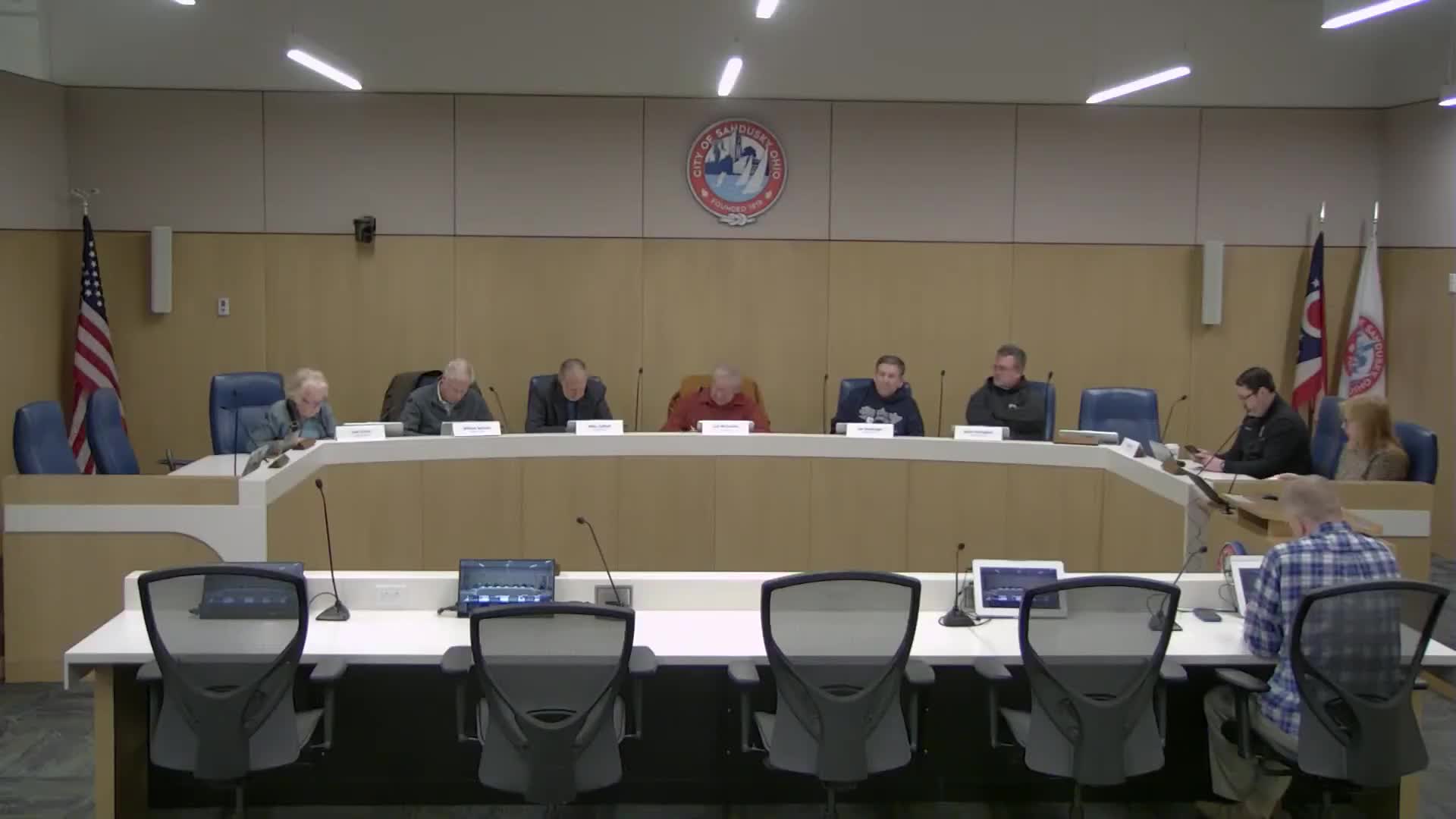City updates on dredge-material placement and Causeway Wetlands; ODNR grant sought
November 07, 2025 | Sandusky Boards & Commissions, Sandusky, Erie County, Ohio
This article was created by AI summarizing key points discussed. AI makes mistakes, so for full details and context, please refer to the video of the full meeting. Please report any errors so we can fix them. Report an error »

City staff briefed the committee on efforts to find beneficial reuses for dredged material following the state ban on open-lake disposal and on plans to bring the Causeway Wetlands to final completion.
Aaron Klein, staff member, summarized the regulatory and logistical context: after the state of Ohio banned open-lake disposal of dredge material in 2017–2018, projects that produce more than 10,000 cubic yards must identify beneficial reuse sites. Klein said the U.S. Army Corps of Engineers, which is responsible for dredging the Moseley Channel, has been working with state and federal agencies to identify suitable placement areas but has faced title, deed and funding complications.
Klein described a parcel north of the railroad that staff believed might be available but where survey work and title reviews revealed deed restrictions and ownership complications; the city turned that matter to the Corps. He said the city has avoided committing local funds to develop new placement cells and has limited its contribution to staff time and facilitation. Agencies now are exploring sites farther east or west in Sandusky Bay, and working with the Nature Conservancy, ODNR and Ohio EPA to identify options.
Klein cautioned that much of the dredged material is silty and not sandy, limiting its usefulness for beach nourishment or structural backfill. "It doesn't have a structural much of a structural component to it either for backfill," he said. He added that some sites inside the city could take limited amounts of material if funding and containment facilities are provided; the Lions Park cell is one potential option, but it would not accept all material from a single dredging cycle.
On the Causeway Wetlands, Klein said two rounds of dredge had been placed and that the cells were expected to need three to five years to compact and dewater. He said the city applied to ODNR for roughly $1.2 million to $1.3 million to reshape the cells, create flow-through wetlands, install native plantings and add riffle/pool habitat for fish. The project aims to improve habitat for fish and birds, reduce nutrient levels (specifically phosphorus), and provide areas for paddle sports and public access once safely planted and stabilized.
Committee members asked whether environmental analyses were performed on placed material; Klein said federal agencies perform required analyses before dredging and placement, and that material would not have been placed had contaminant testing failed.
Klein said the Corps and partner agencies remain open to ideas for additional placement sites and are working to secure demonstration of successful projects to unlock further funding for expansion.
Aaron Klein, staff member, summarized the regulatory and logistical context: after the state of Ohio banned open-lake disposal of dredge material in 2017–2018, projects that produce more than 10,000 cubic yards must identify beneficial reuse sites. Klein said the U.S. Army Corps of Engineers, which is responsible for dredging the Moseley Channel, has been working with state and federal agencies to identify suitable placement areas but has faced title, deed and funding complications.
Klein described a parcel north of the railroad that staff believed might be available but where survey work and title reviews revealed deed restrictions and ownership complications; the city turned that matter to the Corps. He said the city has avoided committing local funds to develop new placement cells and has limited its contribution to staff time and facilitation. Agencies now are exploring sites farther east or west in Sandusky Bay, and working with the Nature Conservancy, ODNR and Ohio EPA to identify options.
Klein cautioned that much of the dredged material is silty and not sandy, limiting its usefulness for beach nourishment or structural backfill. "It doesn't have a structural much of a structural component to it either for backfill," he said. He added that some sites inside the city could take limited amounts of material if funding and containment facilities are provided; the Lions Park cell is one potential option, but it would not accept all material from a single dredging cycle.
On the Causeway Wetlands, Klein said two rounds of dredge had been placed and that the cells were expected to need three to five years to compact and dewater. He said the city applied to ODNR for roughly $1.2 million to $1.3 million to reshape the cells, create flow-through wetlands, install native plantings and add riffle/pool habitat for fish. The project aims to improve habitat for fish and birds, reduce nutrient levels (specifically phosphorus), and provide areas for paddle sports and public access once safely planted and stabilized.
Committee members asked whether environmental analyses were performed on placed material; Klein said federal agencies perform required analyses before dredging and placement, and that material would not have been placed had contaminant testing failed.
Klein said the Corps and partner agencies remain open to ideas for additional placement sites and are working to secure demonstration of successful projects to unlock further funding for expansion.
Don't Miss a Word: See the Full Meeting!
Go beyond summaries. Unlock every video, transcript, and key insight with a Founder Membership.
✓
Get instant access to full meeting videos
✓
Search and clip any phrase from complete transcripts
✓
Receive AI-powered summaries & custom alerts
✓
Enjoy lifetime, unrestricted access to government data
30-day money-back guarantee

